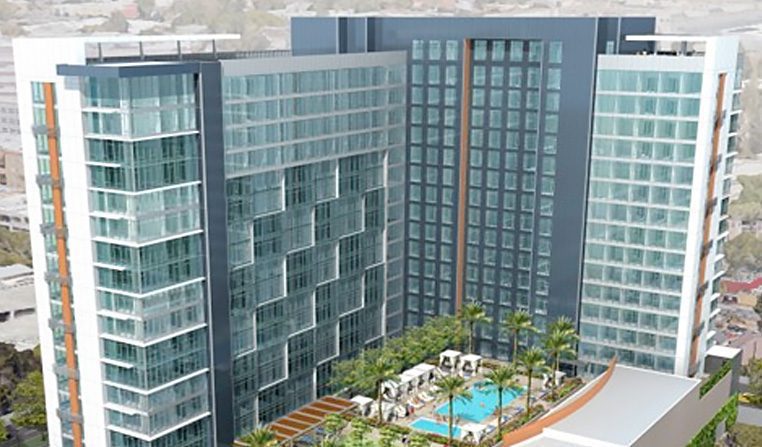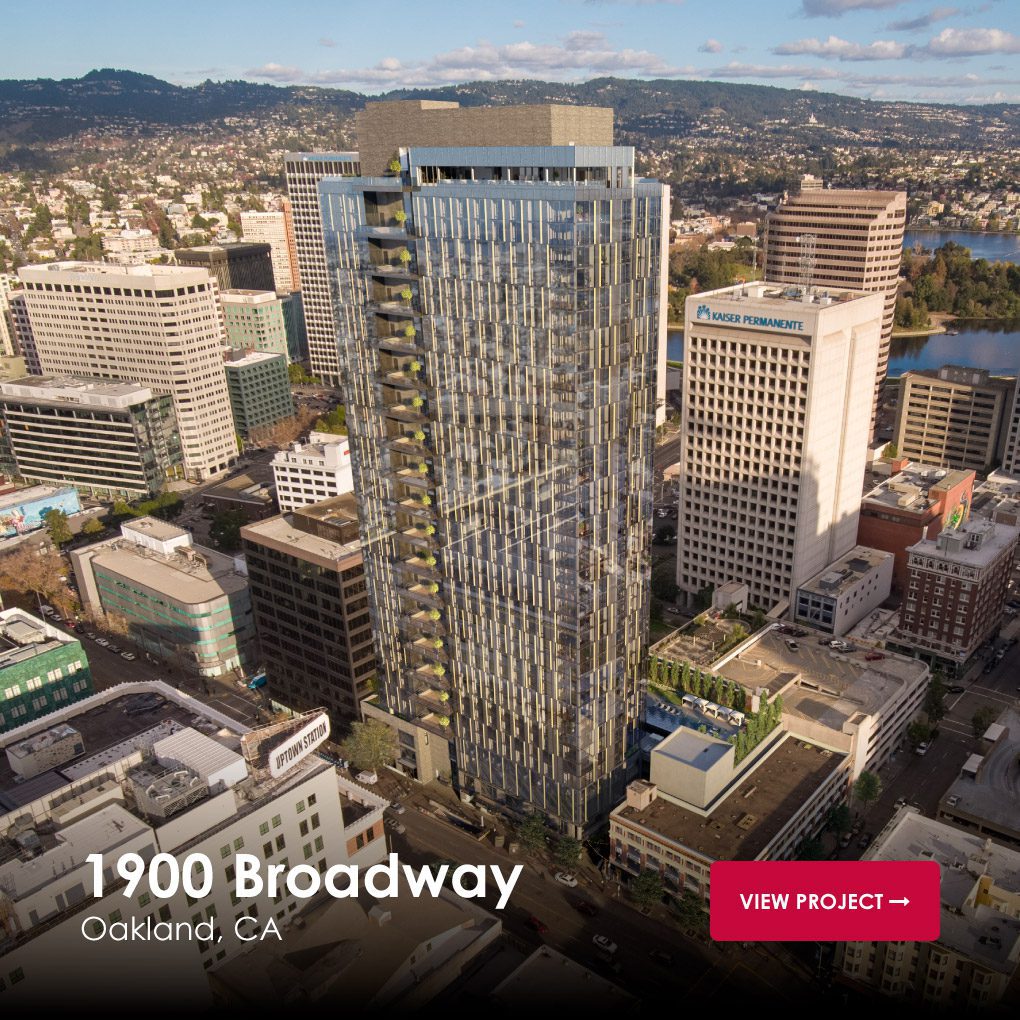Inquire about this property
Features & Advantages
The Graduate is an incredible 19-Story, 260 unit, 1,000+ bed student housing style apartment building located 1 block away from San Jose State University. The Project completed construction in 2020 and was sold in 2021.

Silicon Valley Location
Located 469 feet from the main entrance to San Jose State University. 5 minute walk from the trendy SoFA district of San Jose. 98% occupancy for On-Campus housing with 600 student wait list/

Construction Complete
Construction began in December 2017. Construction completed in 2020 and 100% of job creation required for all EB-5 investors is complete. The Project was sold in 2021.

Ideal Student Housing
First class student-focused amenities: fully furnished suites, private & shared study lougues, business center & computer lab, coffee bar, yoga studio, 2,600 SF fitness center, and resort style swimming pool & spa.

University Housing Shortage
As of 2017, San Jose State University’s on-campus student housing had a 98% occupancy rate and 1,400+ students were wait-listed for on campus housing.

Low Risk Business Model
Loan-style investment with a construction completion guarantee, indirect job creation guarantee, and an equity pledge from the project developer. Click here to learn more about our project protections and guarantees.

Top Quality Development Team
Top tier development team with over 100 years of development and construction history in California.
Behring’s Top FAQs
EB-5 is an investment based immigration program where foreign investors who invest in the United States and create jobs for American workers can apply for permanent residency or a “Green Card“.
• An immigrant investor who invests $1,050,000 (or $800,000 in a target employment area) and creates 10 jobs for American workers can achieve permanent residency (or green card) for themselves and qualifying family members. To qualify as an “investment” the investor’s project is required to have risk.
• The program has various requirements and stipulations such as how the jobs are counted, what documentation needs to be provided and more. There are 2 styles of investment, investing directly or through a federally-designated Regional Center. When investing directly, the investor makes a direct investment into a job creating company.
• A USCIS approved Regional Center is a vehicle that has gone through a sort of pre-approval process with USCIS. The Regional Center pilot program’s core purpose is to make the EB-5 investment process easier for the investor, more streamlined for USCIS approvals, and further promote U.S. economic growth. The Regional Center essentially can take all the management and job creation responsibilities out of the hands of the investor. The Regional Center is a powerful job creating entity that is granted the capability to pool multiple investors together like a “fund” and create jobs in multiple direct and indirect capacities.
• Most regional center projects are in Target Employment Areas, allowing the EB-5 investors to take advantage of the lower investment threshold. Most EB-5 investments made today are invested through EB-5 regional centers.
You choose the Regional Center and the Regional Center ensures the project is EB-5 compliant.
• When investing through an EB-5 regional center, an EB-5 petitioner will usually invest into a limited partnership fund established specifically for that chosen EB-5 project. This limited partnership fund then issues a loan to the EB-5 project developer.
• The limited partnership fund functions similarly to a private bank issuing construction loans. There is usually some collateral offered to the fund by the project developer, such as an equity pledge or corporate guarantee to ensure the debt is repaid. A good analogy is home mortgages; if you have a mortgage and fail to make payments, the bank that issued you debt would foreclose on the property and initiate a sale to reclaim funds.
• Through this loan, the project developer demonstrates job creating activity through their budget expenditures on the project.
• In the case of real estate based EB-5 projects, once construction completes the developer will operate the project until the project has reached stabilized occupancy and then the project is refinanced or sold. The EB-5 limited partners are then repaid from the proceeds of the new long-term debt or sale at the end of their individual investment terms.
• EB-5 Limited Partnerships sometimes take equity positions in real estate investment funds. Contact Behring Companies to learn more about what equity investments are available.
The EB-5 investor’s spouse and unmarried children under the age of 21 are eligible to receive immigration benefits
• One important thing to note, the Childhood Status Protection Act (CSPA) helps to protect children of EB-5 petitioners against long petition processing times. The child’s age “freezes” at the time of I-526 application, meaning that once the I-526 petition is approved, the time the I-526 petition spent processing is subtracted from the child’s age.
• Keep in mind, the child’s age will “unfreeze” after I-526 approval, so the child may still age out if there is additional wait time prior to filing adjustment of status.
• Schedule a call with a Behring Companies’ EB-5 expert to evaluate your child’s risk of “aging out”.
When investing through an EB-5 regional center, there are only two primary eligibility requirements for EB-5 investment:
1.Having $800,000 available for investment that meets USCIS requirements
2.Meeting the Accredited Investor requirements established the Securities and Exchange Commission (SEC)
Learn more about the source of fund requirements by USCIS for your $800,000 investment by clicking here.
Learn more about being an accredited investor by clicking here.
An accredited investor is a person who is permitted to purchase securities that are not registered with the Securities and Exchange Commission. They are entitled to such privileged access if they satisfy at least one of the following requirements:
- Have a net worth of at least $1,000,000, excluding the primary residence. This net worth calculation can include assets held outside of the US.
- Have an annual gross income more than $200,000 for each of the last two calendar years. This requirement is raised to $300,000 when considering the joint income of a married couple. If either spouse individually earns $200,000, the couple does not need to consider their joint income for the requirement.
In the U.S., the term is used by the Securities and Exchange Commission (SEC) under Regulation D to refer to investors who are financially sophisticated and have a reduced need for the protection provided by regulatory disclosure filings.
If you are not certain that you can meet the accredited investor requirement, schedule a complimentary EB-5 consultation with one of our EB-5 experts to determine your eligibility and to learn how you can have your accredited investor status verified.
The cost of EB-5 investment is variable depending on several factors including (1) which regional center the EB-5 investor engages, (2) the law firm the EB-5 investor engages, and (3) the number of individuals that immigrate via the EB-5 investor’s petition.
The following is a general cost estimate for EB-5 investment through a regional center:
- I-526 Stage: $84,840
- I-485 Stage: ~$5,925
- I-829 Stage: ~7,425
- Total Cash Needed: $98,190
In some cases, there are administrative discounts available to investors, schedule a complimentary EB-5 consultation to get quoted a cost estimate for your EB-5 investment and to receive an itemized cost breakdown.
EB-5 Petition processing time estimates as of October 2018:
- I-526 Petition processing time: 20.5 to 26.5 months
- I-485 Petition processing time: 10 to 24.5 months (variable depending on chosen field office or service center)
- I-829 Petition processing time: 30 to 39 months
Residents from China, India, and Vietnam can expect additional processing time after I-526 approval, prior to filing for adjustment of status, due to visa retrogression. Contact us to schedule a complimentary consultation to get a time estimate based on the details of your own situation.
Jobs can be documented in two ways; direct employment or indirect employment. Regional Centers simplify job creation because we can use direct and indirect jobs.
• Direct employment involves hiring individuals directly, paying a salary, benefits, and tracking employment related documents such as W-2s and tax returns. If direct employment is being considered for EB-5 job creation, the jobs must be maintained for two years each.
• Because regional center EB-5 investments are typically larger scale projects, regional centers often utilize indirect job creation. Indirect jobs, or induced jobs, are a form of job creation measured through budget expenditure and economic impact. Job creation is calculated using an economic Input-Output model, where budget expenditures are the input and jobs are the measured output. These kinds of models are often utilized when directly tracking employment would be too burdensome. For example, Input-Output models are utilized to calculate jobs lost due to natural disasters, or jobs created from economic stimulus packages.
• Using these models, EB-5 project managers are not necessarily tracking the directly hired employees for the purposes of documentation job creation, rather, the economic expenditure used to calculate the economic equivalence of jobs created.
• Learn more about job creation with this video: https://youtu.be/7hpaJ9jpd5s
USCIS permits a ramping up period of the investment. This means the entire investment amount is not required at the time of applying for the EB-5 visa.
• The EB-5 investor does need to demonstrate the availability of funds, as well as a commitment to invest the full investment amount on a determinate schedule. Simply intending to invest or planning to invest in the future without a present commitment will not qualify an investor for EB-5.
• Schedule a call with a Behring Companies representative to discuss Partial Capital Contributions and learn how you can phase your EB-5 investment over time.










